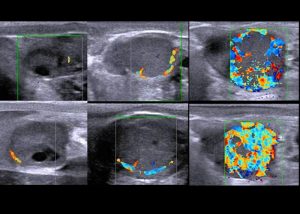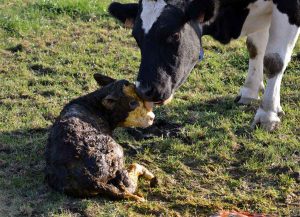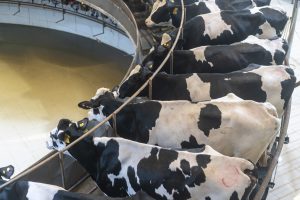Fernando Diaz
An accurate and early diagnosis of gestation is essential to detect pregnant cows as soon as possible in order to carry out a successful breeding program on a dairy farm. In addition, it enables more adequate decisions to be made about the feeding and drying of cows and those intended for culling.
A gestation test should be highly sensitive, specific, economical and easy to perform on the farm. Current tests for diagnosing gestation include direct (transrectal palpation and ultrasound) and indirect (milk progesterone detection and detection of glycoproteins in blood or milk associated with gestation). All these methods are expensive, require relatively intense animal management, and have limited efficacy.
During pregnancy, cows experience changes in their energy and metabolic requirements that are reflected in milk production and composition. As gestation progresses, fat, protein, lactose and casein increase in milk and generally, beginning on the third month of gestation milk production begins to decrease.
The Fourier-transform mid-infrared (MIR) spectroscopy is a technique routinely used to analyze the main components of milk. It allows for low-cost, high-performance and large-scale analysis, so it would be very interesting to use this technique to diagnose gestation easily and economically on farms.
In order to assess the ability of the MIR to predict the pregnancy status in dairy cows, a study was conducted in Australia, published in the Journal of Dairy Science in April 2020. To this end, the authors used the data, including the milk MIR spectra and insemination records, of 8.064 Holsteins from 19 commercial dairy farms located in Victoria, Tasmania and New South Wales, during 2016, 2017 and 2018.
Milk analysis using infrared spectroscopy
To determine the status of each cow, as open or pregnant for each test date, the authors used the insemination records and the corresponding expected due date. When an insemination did not result in pregnancy, they established MIR records in open cows before and after insemination. When an insemination resulted in pregnancy, they established the MIR records that occurred before and after that insemination in the open and pregnant state, respectively. Gestation was confirmed by the registration of actual calving. Cows without birth registration were considered open.
When the combined data from all stages post insemination were used, the results of this study were limited, so the researchers decided to analyze separate models in seven stages post insemination. They developed these models using data collected from the 150th day of gestation.
The study concluded that the MIR spectral data from milk collected at different stages post insemination is insufficient to a diagnosis of gestation. However, the results of the data recorded at a later stage are very promising. If it were possible to confirm these results with a larger data set, it could be shown that the MIR technique can accurately predict gestational status in its later stages, but not in the early stages, and the model developed in this study could be used as a complementary tool to detect abortions.
Reference
Delhez P, Ho PN, Gengler N, Soyeurt H, Pryce JE. 2020. Diagnosing the pregnancy status of dairy cows: How useful is milk mid-infrared spectroscopy? J. Dairy Sci. 103:3264–3274.
© 2021 Dellait Dairy Knowledge Center. All Rights Reserved.









